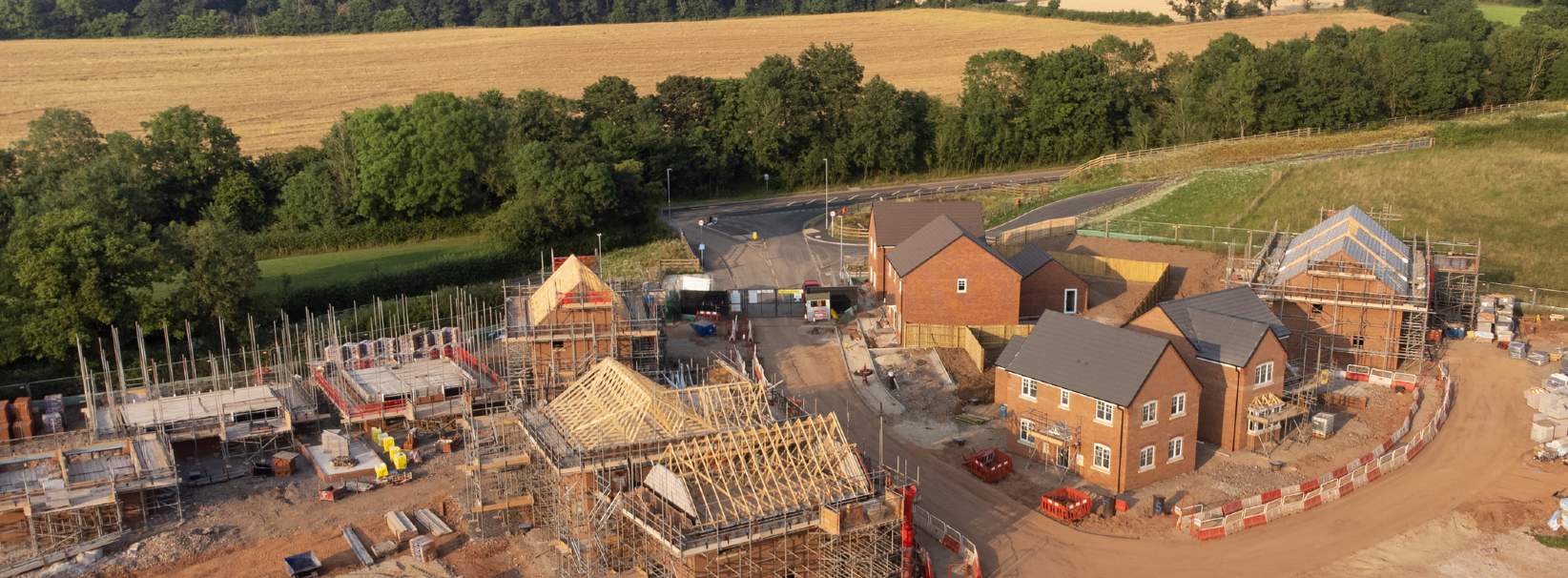Increasing land supply
Both the Conservative and Labour parties have in recent months restated their commitment to housebuilding, setting development as one of the foundations for economic growth. Labour has particularly set ambitious aspirations, pledging at their Autumn Conference to deliver 1.5 million homes over a five-year period. They have also stated a commitment to re-introduce mandatory housing targets at a local authority level, which have been watered down by the current Government through the December 2022 revisions to the NPPF. The Conservatives appear to remain committed to the target of 300,000 homes per year.
However, these ambitions have not to date been matched by land and planning policy to deliver the level of development land required. This has been a driving factor in both the strong growth in development land values since 2020, and limited price corrections in the recent market downturn. Around 255,000 homes gained planning consent in the twelve months to June 2023, according to Glenigan data, a 24.8% decrease from 2019 levels. This issue is compounded by the slowdown in local plan making, with only 25% of local authorities having a fully up to date local plan in place.
Both parties have suggested measures to increase land supply. On the Conservative side, Michael Gove set out the intention to introduce a new bill tackling nutrient neutrality at the “first available opportunity”, which could unlock sites with capacity for over 140,000 homes, predominantly in the South and East of England. Rachel Maclean, the Housing and Planning Minister also suggested that the Government would intervene more firmly in local authorities that had not produced a local plan. However, it seems unlikely that any of this will happen quickly, and it has already been suggested Gove’s aim to resolve the nutrient challenge will be dropped.
Labour have focused on the need to reform the planning system and increase capacity, with Shadow Chancellor Rachel Reeves announcing plans to hire more than 300 new planners in the public sector. At their conference, Labour reconfirmed their willingness to consider developing on Green Belt land, particularly ex-industrial sites and low quality scrubland, which they have termed “the grey belt”. Our analysis suggests this would apply to over 22,000 acres in the Green Belt, with capacity for just under a million homes. The greatest areas of opportunity are in the London, Merseyside and Birmingham Green Belts. However, this will be contentious and any changes to the Green Belt will be hard fought over.
If either of these approaches are successful in speeding up planning and unlocking increased amounts of land for housing development, we would expect it to dampen future land value growth. The market would likely behave similarly to the early 2010s, when the number of residential consents granted increased by 75% following the introduction of the NPPF in 2012. During this period, greenfield development land value growth was muted, and by 2017 remained 13% below the pre-GFC peak. In contrast, house prices grew to be 15% above their 2007 peak. A major and sustained increase in land supply would now likely lead to price falls, possibly back to the values that were being achieved in 2019.
Urban v Greenfield
There is also the potential for some market distortion by policy changes that focus on specific types of sites or locations. In July 2023 Michael Gove set out plans that would see development focused on regeneration of the 20 “most important” towns and cities in England. With a greater emphasis on brownfield development, rather than the greenfield suburban model that has dominated since the introduction of the NPPF in 2012. The proposed Conservative approach would be more aligned with the brownfield first approach of PPG3 and PPS3 during the 2000’s. This would likely result in restricted supply of greenfield edge of settlement sites, which have been key to the expansion of housebuilding over the last decade.
However, we would not expect demand for greenfield sites from developers to drop, given that these sites are usually simpler, faster and less expensive to develop than complex brownfield land, in addition to being more in demand from purchasers for the completed product. Consequently, Conservative policy would likely result in upwards pressure on greenfield land values, while urban land markets would see price falls as a consequence of increased supply. The greenfield land market could shift from the relatively benign environment enjoyed by developers between 2014 and 2020, to more closely resembling the 2001-2007 market. Between September 2001 and September 2007, greenfield land values grew by 76%, compared to a rate of growth of just 19% in the better supplied brownfield market.
